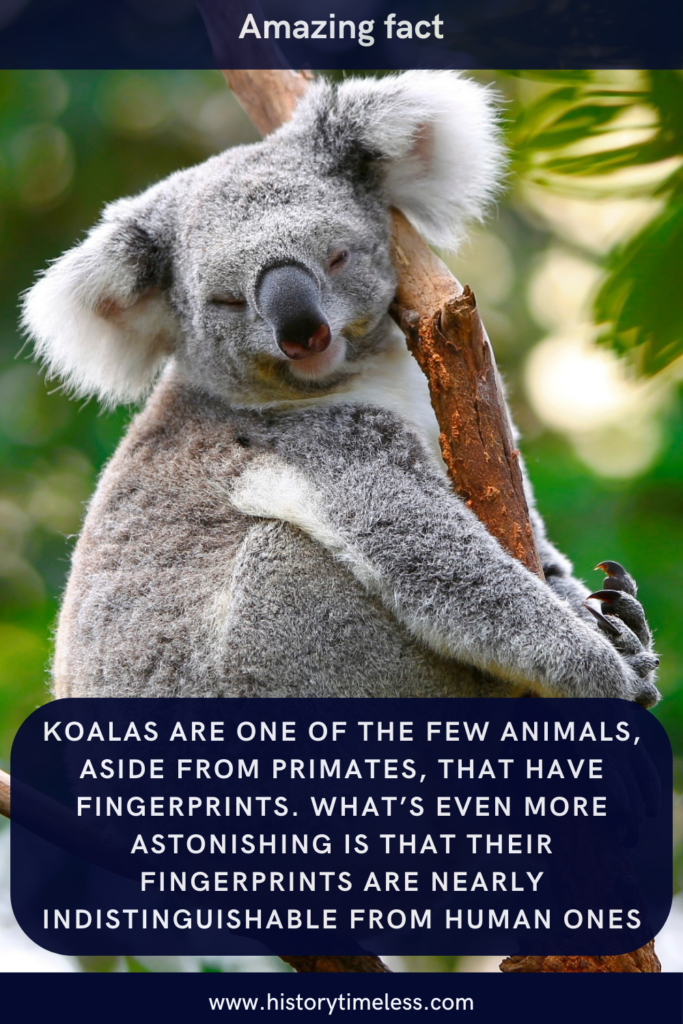Animals are some of the most fascinating creatures on Earth, each with unique traits and behaviors that often leave us in awe. From the depths of the ocean to the highest treetops, the animal kingdom is full of surprises. Whether it’s their intelligence, adaptability, or sheer strangeness, there’s always something new to learn. Here are 25 random animal facts that will amaze and delight you!
1. Octopuses Have Three Hearts and Blue Blood
Octopuses are truly alien-like creatures, and their biology is proof. They have three hearts: two pump blood to the gills, and one pumps it to the rest of the body. Interestingly, their blood is blue because it contains copper-based hemocyanin instead of iron-based hemoglobin.
Even more fascinating? When an octopus swims, the heart that pumps blood to the body actually stops beating, which is why they prefer crawling over swimming to conserve energy.
2. Cows Have Best Friends and Get Stressed When Separated
Cows are highly social animals and form strong bonds with their herd members. Research has shown that cows develop “best friends” and experience stress when separated from them. They communicate through vocalizations and body language, and their friendships even influence their grazing patterns. This emotional depth highlights how cows are far more complex and sensitive than many people realize.
3. A Group of Flamingos is Called a “Flamboyance”
Flamingos are known for their vibrant pink feathers and striking appearance, but did you know their group name is just as colorful? A gathering of flamingos is called a “flamboyance,” which perfectly captures their dramatic and elegant presence. These social birds often stand on one leg to conserve body heat and can live in colonies of thousands, creating a breathtaking sea of pink.
4. Elephants Can “Hear” With Their Feet
Elephants are known for their incredible hearing, but they also have a unique way of detecting sounds through their feet. They can pick up low-frequency vibrations from miles away, such as the rumble of distant thunderstorms or the footsteps of other elephants.

These vibrations travel through the ground and are sensed by specialized receptors in their feet, allowing them to communicate over long distances.
5. Honeybees Can Recognize Human Faces
Honeybees are smarter than you might think! Studies have shown that they can recognize and remember human faces, thanks to their ability to process complex visual patterns. This skill helps them navigate their environment and identify flowers, but it also means they can distinguish between different people. Their tiny brains are surprisingly adept at handling tasks that even some larger animals struggle with.
6. Sloths Only Poop Once a Week
Sloths are known for their slow movements, but their digestive system is even slower. They only poop once a week, and when they do, it’s a big event. Sloths climb down from their trees to defecate on the ground, which is risky because it makes them vulnerable to predators. Scientists believe this behavior helps fertilize the trees they live in, creating a symbiotic relationship.
7. Penguins Propose With a Pebble
Penguins are incredibly romantic creatures. During courtship, male penguins search for the perfect pebble to present to their chosen mate. If the female accepts the pebble, it symbolizes the start of their partnership. These pebbles are also used to build nests, making them both a romantic gesture and a practical gift. This behavior highlights the thoughtful and cooperative nature of penguin relationships.
8. Axolotls Can Regenerate Lost Body Parts
The axolotl, a type of salamander, is a master of regeneration. Unlike most animals, axolotls can regrow entire limbs, including bones, muscles, and nerves. They can even regenerate parts of their heart and brain! This incredible ability has made them a subject of scientific research, as scientists hope to unlock the secrets of their regenerative powers for medical advancements.
9. Wombat Poop is Cube-Shaped
Wombats are the only animals in the world that produce cube-shaped poop. This unusual shape prevents the droppings from rolling away, which is especially useful since wombats use their poop to mark their territory. The unique shape is created by the wombat’s intestines, which have varying elasticity to form the cubes during digestion. It’s a quirky adaptation that’s both practical and fascinating.
10. Starfish Have No Brain or Blood
Starfish, or sea stars, are truly unique creatures. They have no brain or blood, yet they can navigate their environment and even regenerate lost arms. Instead of blood, they use seawater to pump nutrients through their bodies via a water vascular system. Their nervous system is spread throughout their body, allowing them to sense light and touch without a centralized brain.
11. Mantis Shrimps Punch With the Speed of a Bullet
Mantis shrimps are small but mighty. Their claws can strike with the speed of a bullet, reaching up to 50 miles per hour in just milliseconds. This punch is so powerful that it creates tiny bubbles that collapse and produce a shockwave, stunning or even killing their prey. The force is strong enough to break aquarium glass, making them one of the most formidable predators in the ocean.
12. Koalas Have Fingerprints Almost Identical to Humans
Koalas are one of the few animals, aside from primates, that have fingerprints. What’s even more astonishing is that their fingerprints are nearly indistinguishable from human ones, even under a microscope.

Scientists believe this unique trait evolved to help koalas grip tree branches and leaves more effectively. It’s a quirky example of convergent evolution, where unrelated species develop similar traits.
13. Narwhal Tusks Are Actually Giant Teeth
The narwhal’s iconic tusk is not a horn but an elongated tooth that can grow up to 10 feet long. This tusk, which is usually found in males, is packed with nerve endings and is thought to play a role in sensing changes in the environment, such as temperature or salinity. Some researchers also believe it’s used in mating displays or even for breaking ice.
14. Butterflies Taste With Their Feet
Butterflies have taste receptors on their feet, allowing them to “taste” the plants they land on. This helps them determine whether a plant is suitable for laying eggs, as their caterpillars will need to feed on it after hatching. This unique adaptation ensures that their offspring have the best chance of survival, making butterflies both delicate and highly strategic.
15. Platypuses Glow Under Ultraviolet Light
The platypus is already one of the strangest animals, with its duck-like bill and ability to lay eggs. But scientists recently discovered another bizarre trait: platypuses glow under ultraviolet light. This biofluorescence is thought to help them communicate or avoid predators in their murky freshwater habitats. It’s just another reason why the platypus is a true marvel of nature.
16. Puffins Can Carry Dozens of Fish in Their Beaks
Puffins are incredible fishermen. Their beaks have backward-facing spines that allow them to hold multiple fish at once, sometimes carrying more than 10 fish in a single trip. They use their tongues to press the fish against these spines, ensuring they don’t drop their catch. This skill is essential for feeding their chicks, who rely on a steady supply of fish.
17. Cheetahs Can’t Roar, But They Purr
Unlike other big cats, cheetahs can’t roar. Instead, they communicate through a variety of sounds, including purring. Cheetahs purr when they’re content, much like domestic cats. This purring is produced by the vibration of their vocal cords and is often heard during social interactions, such as grooming or resting with their cubs.
18. Humpback Whales Create “Bubble Nets” to Catch Fish
Humpback whales are ingenious hunters. They work together to blow bubbles in a circular pattern, creating a “bubble net” that traps schools of fish. The whales then swim upward through the center of the net with their mouths open, scooping up hundreds of fish in one go. This cooperative hunting technique showcases their intelligence and teamwork.
19. Capuchin Monkeys Use Tools Like Humans
Capuchin monkeys are among the few animals that use tools in the wild. They use rocks to crack open nuts and sticks to dig for insects. Some have even been observed using leaves as cups to drink water. This behavior demonstrates their problem-solving skills and adaptability, making them one of the most intelligent primates.
20. Sea Otters Hold Hands While Sleeping
Sea otters are known for their adorable habit of holding hands while they sleep. This behavior, called “rafting,” helps them stay together in groups and prevents them from drifting apart in the water. Mothers also hold their pups on their chests to keep them safe and warm. This touching display of affection highlights the strong social bonds among sea otters.
Explore More Facts:
20+ Bird Facts That Will Change Your World!
30 Brown Eye Facts That Will Blow Your Mind!
15+ Interesting World Facts: Say ‘Wow’ to These Discoveries!
20+ Must-Know Cat Behavior Facts for Every Cat Lover!
21. The Lyrebird Can Mimic Almost Any Sound
The lyrebird, native to Australia, is a master of mimicry. It can imitate not only the calls of other birds but also man-made sounds like chainsaws, camera shutters, and car alarms. This incredible ability is used to attract mates and defend territory. The lyrebird’s vocal range is so impressive that it can recreate entire soundscapes, making it one of nature’s most talented performers.
22. Tardigrades Can Survive in Space
Tardigrades, also known as “water bears,” are microscopic creatures that are virtually indestructible. They can survive extreme conditions, including freezing temperatures, boiling water, and even the vacuum of space. Tardigrades enter a state called cryptobiosis, where they dehydrate their bodies and slow their metabolism to near zero. This allows them to withstand environments that would be fatal to most other life forms.
23. The Kakapo Parrot Smells Like Honey
The kakapo, a flightless parrot from New Zealand, has a unique and pleasant scent often described as honey-like or floral. This aroma is thought to help them attract mates, as they use a “lekking” system where males gather and compete for female attention. Unfortunately, the kakapo is critically endangered, with fewer than 250 individuals left in the wild, making its sweet scent a rare treasure.
24. The Immortal Jellyfish Can Reverse Its Aging Process
The Turritopsis dohrnii, also known as the “immortal jellyfish,” has the extraordinary ability to revert its cells to their earliest form and start its life cycle over again. When faced with stress or injury, it transforms back into a polyp, essentially bypassing death. This process can theoretically repeat indefinitely, making it one of the only known creatures capable of biological immortality.
25. The Pistol Shrimp Creates Underwater Shockwaves
The pistol shrimp has one of the most powerful weapons in the animal kingdom: its claw. When it snaps its claw shut, it creates a bubble that collapses with such force it produces a shockwave, reaching temperatures as hot as the sun’s surface for a fraction of a second. This shockwave can stun or even kill prey, making the pistol shrimp a tiny but fearsome predator.





